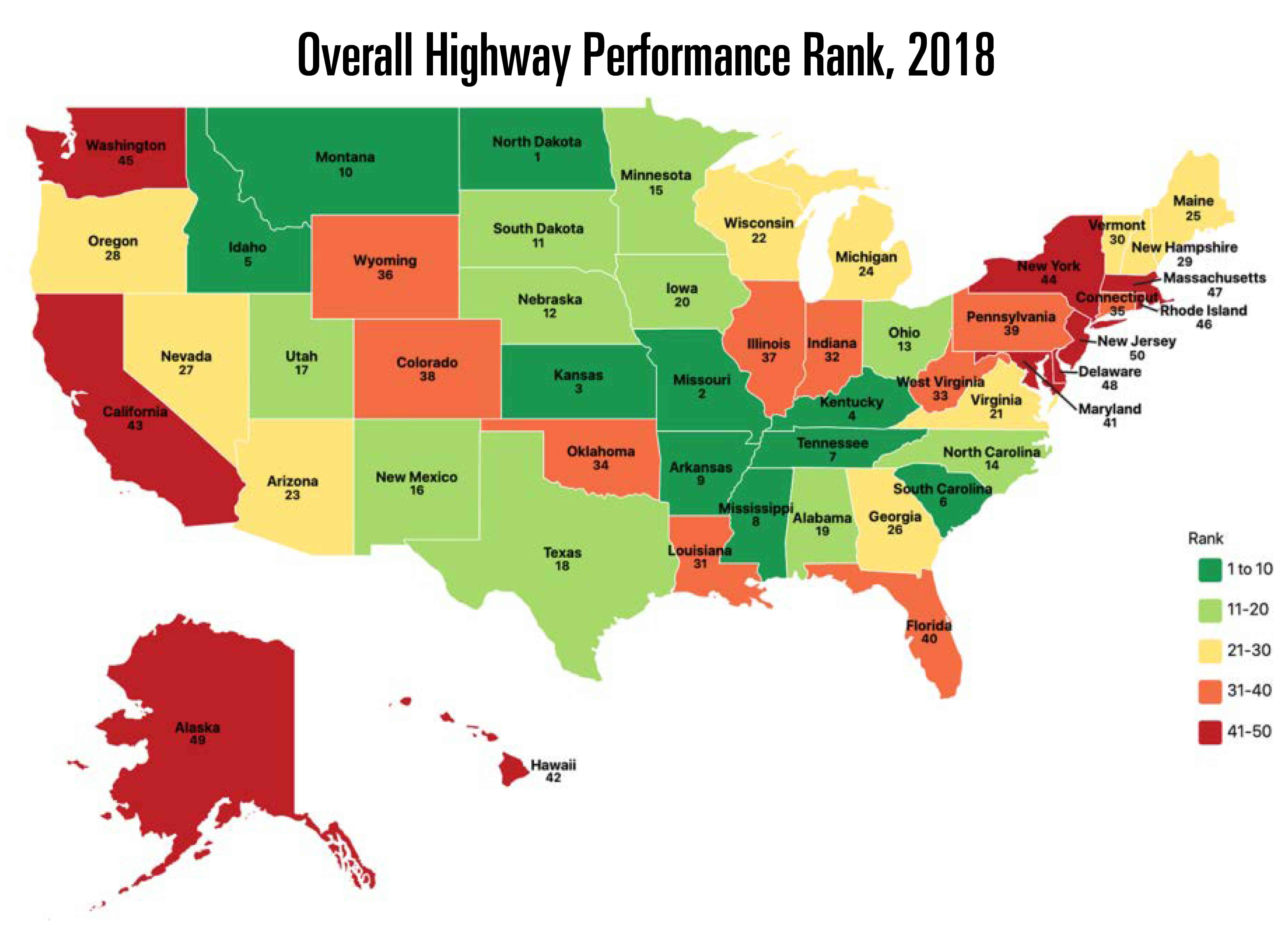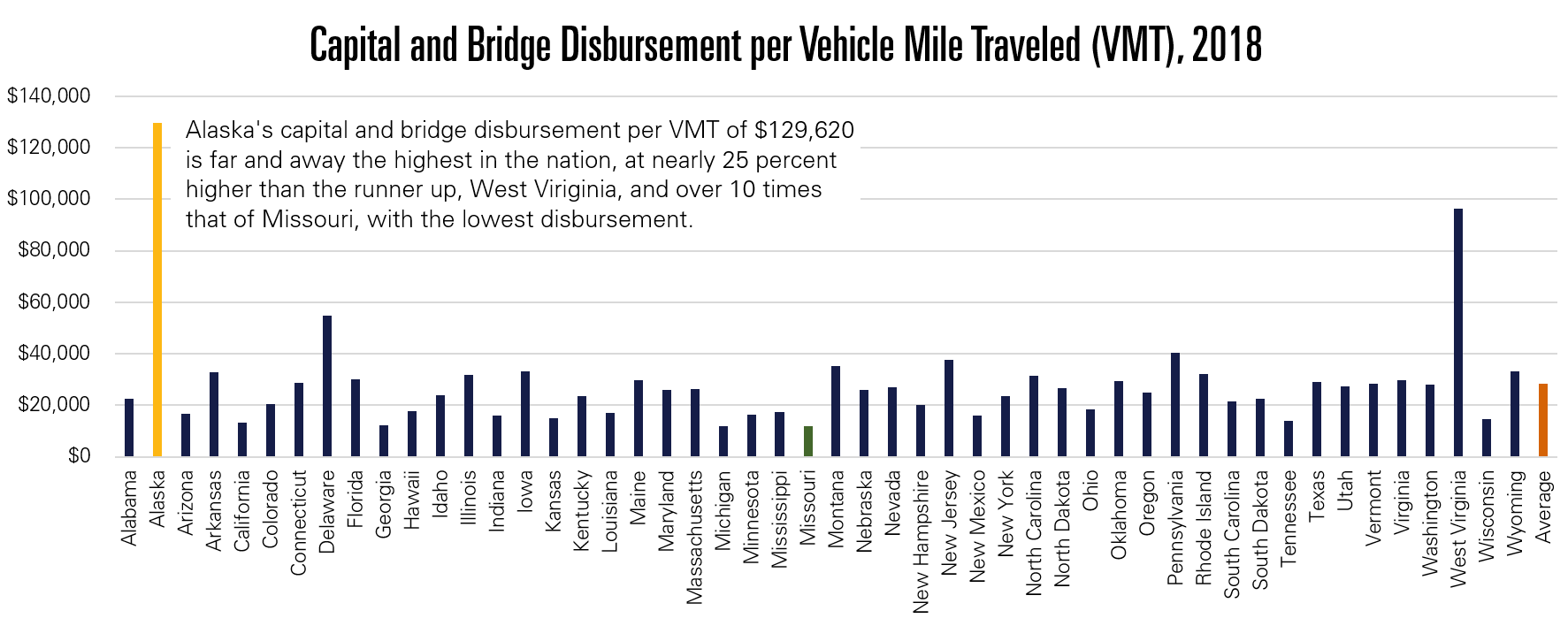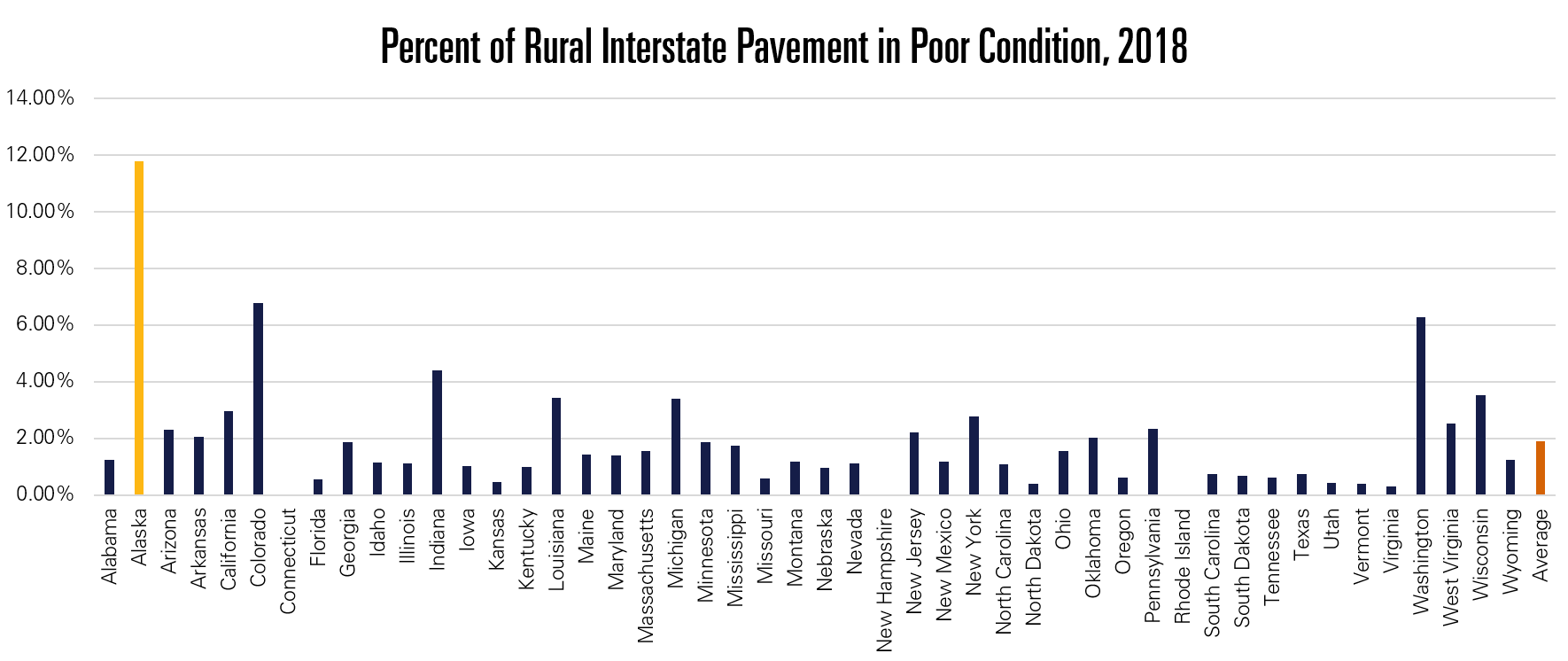 Given the necessity of roads in helping Alaskans travel, investing taxpayer dollars in roads seems to be one of the few legitimate functions of government. But according to the Reason Foundation, Alaskans aren’t receiving what they pay for – safe conditions at a reasonable price.
Given the necessity of roads in helping Alaskans travel, investing taxpayer dollars in roads seems to be one of the few legitimate functions of government. But according to the Reason Foundation, Alaskans aren’t receiving what they pay for – safe conditions at a reasonable price.
The Reason Foundation released the 25th Annual Highway Report that ranks state highway systems on cost versus quality using data from 2018 and 2019. In the methodology, comparing performance requires considering both system performance and available resources; thus, budgets are compared with system performance while accounting for the number of miles the state is responsible for. States with high ratings typically have better-than-average system conditions with relatively low per-mile expenditures on new construction, maintenance, and administration.
Alaska’s highways ranked 49th overall, ahead of only New Jersey, indicating that Alaska’s highways are expensive and in poor condition – an assessment that most Alaskans would agree with. The overall ranking reports no change from 2016 and a one-place decrease from 2015.
The ranking uses spending and performance data submitted by state highway agencies to the Federal Highway Administration, urban congestion data from the American Community Survey, bridge condition data from the National Bridge Inventory, and highway fatality rates reported by each state. Fatalities are measured as fatalities per 100 million vehicle-miles of travel, urban congestion is measured in the annual delay per auto commuter, and financial metrics are measured in disbursements per mile. States that perform better in these categories relative to other states are ranked higher overall.
Figure 1

Source: Baruch Feigenbaum, Spence Purnell, and Joe Hillman, 25th Annual Highway Report, Reason Foundation, 2020.
Alaska’s performance in most individual metrics measured by the 25th Annual Highway Report is dismal. The good news is that for three metrics, Alaska ranked above 25th: urban interstate pavement condition (17th), urban arterial pavement condition (21st), and urbanized area congestion (fifth).
The authors found that 2.5 percent of major multi-lane highways in urbanized areas are in poor condition, placing Alaska 17th for the urban interstate pavement condition metric. Both New Hampshire and Vermont reported clean bills of health in this metric, with 0 percent of their urban interstate mileage in poor condition. On the opposite end, Wyoming ranked last with nearly 37 percent of their urban interstate mileage in poor condition. Alaska performed similarly to Missouri and New Mexico in this metric.
The ranking paints a similar picture for urban arterial pavement condition, which measures the condition of four- to eight-lane roadways. In this metric, Alaska ranked 21st with nearly 8 percent of these roads being in poor condition. Wyoming also performed the worst here, with nearly 43 percent of their four- to eight-lane roadways being in poor condition. Alaska performed similarly to Delaware and Missouri in this metric.
The urbanized area congestion metric, in which Alaska ranked fifth, reported that the peak hours spent in congestion per auto commuter compared to free-flow conditions to be slightly over seven hours. Simply put, Alaskans spent seven hours sitting in peak-hour congestion in 2019. Though all may be envious of Idaho residents, who spent only three-and-a-half hours in peak-hour traffic, Alaskans spent far less time in traffic than the average American, who spent 33 hours in peak-hour traffic. Alaska’s seven hours are more starkly contrasted with the worst performer, Delaware, whose residents spent 116 hours in peak-hour traffic.
The expenses that new construction, maintenance, and administration impose on taxpayers are often substantial, and an important part of the Annual Highway Report evaluates the cost of roads per vehicle-mile and per lane-miles. In terms of total disbursements per mile (which includes capital, maintenance, and administrative disbursements as well as highway law enforcement and safety, interest, and bond retirement), Alaska ranked 48th, outperforming only Massachusetts and New Jersey. Because capital, maintenance, and administrative disbursements comprise the majority of expenditures, almost 75 percent in 2018, the report measures them individually as well.
The metric of capital and bridge disbursements per mile measures the costs to build new highways and widen existing highways and bridges. Alaska ranked 49th in this metric, with $40,390 per lane-mile disbursed. Measured by state highway agency (SHA), disbursements were $126,260. However, Alaska reported the highest expenditures per vehicle-mile traveled (VMT) of $129,620. This is almost 25 percent more expensive than the runner-up, West Virginia, which reported $96,540 per VMT, which is significantly higher than the average VMT expenditures of $28,289.
Figure 2

Source: Baruch Feigenbaum, Spence Purnell, and Joe Hillman, 25th Annual Highway Report, Reason Foundation, 2020.
The maintenance disbursements per mile metric assesses the cost to perform routine upkeep, such as filling potholes and repaving roads. Alaska ranked 46th, spending $13,555 per lane-mile and $43,501 per VMT on maintenance. In comparison, the national average maintenance per VMT was $9,950. Clearly, some of Alaska’s maintenance costs are a result of freezing and thawing that accelerates damage to pavement. However, closely analyzing the value these maintenance disbursements provide may help Alaskans get more from less.
In terms of administrative disbursements, which includes general and main-office expenditures in support of state highways, Alaska ranks 42nd. Alaska reported below-average administrative disbursements per SHA of $16,387 and per lane-mile of $5,242. In comparison per VMT, Alaska’s administrative disbursements were $16,823, far above the national average of $4,154.
However, Alaskans aren’t getting what they pay for in terms of road conditions in most areas of the state. In the rural interstate pavement condition metric, which measures the conditions in rural four- to six-lane highways, Alaska ranked 48th. Because Delaware and Hawaii did not report, Alaska placed last in this metric. Alaska reported almost 12 percent of these roads to be in poor condition – contrast this with the national average of 2 percent in poor condition. Similarly, Alaska ranked 50th for rural four- to six-lane highways pavement condition, reporting nearly 23 percent of these roads to be in poor condition. The national average was only 2 percent of rural four- to six-lane roads in poor condition.
Figure 3

Source: Baruch Feigenbaum, Spence Purnell, and Joe Hillman, 25th Annual Highway Report, Reason Foundation, 2020.
Alaska ranked 38th in the structurally deficient bridges category, which measures the percentage of bridges rated as deficient at the last inspection, which must occur at least every two years. This is significant because bridges rated as deficient are eligible for federal repair funds. Alaska reported nearly 10 percent of its bridges as deficient. Alaska is not much worse than the average of about 8 percent of bridges deficient.
The most disappointing aspect of Alaska’s performance on the Annual Highway Report is in fatalities. For the overall fatality rate, measured in fatalities per 100 million vehicle-miles across all state roads, Alaska ranked 44th, with a fatality rate of nearly 1.46. This is compared to the national average of 1.14, which indicates fewer deaths per miles driven across the nation compared to Alaska. The rural fatality rate, in which Alaska ranked 46th, was 2.02 fatalities per 100 million vehicle-miles for rural roads. This is also somewhat higher than the national average of 1.42 fatalities per 100 million vehicle-miles on rural roads. Finally, Alaska ranked second-to-last in the urban fatality rate metric, with 1.54 fatalities per 100 million urban vehicle-miles, surpassed by only New Mexico, which reported a fatality rate of 1.58. In addition, Alaska’s urban fatality rate increased by 0.5, meaning that another person died per 200 million vehicle-miles in 2018 compared to 2016. The nationwide average urban fatality rate of 0.78 is nearly half that of Alaska’s urban fatality rate, which indicates a significant and worsening problem.
The report notes that Alaska’s best rankings were in urban interstate pavement condition, urban arterial pavement condition, and urbanized area congestion. However, Alaska simultaneously has some of the largest disbursements on capital and maintenance while suffering the some of the poorest conditions for all roads and bridges. Alaska must effectively utilize disbursements to fix dangerous road conditions that contribute to Alaska’s shocking fatality rates.